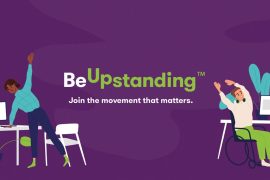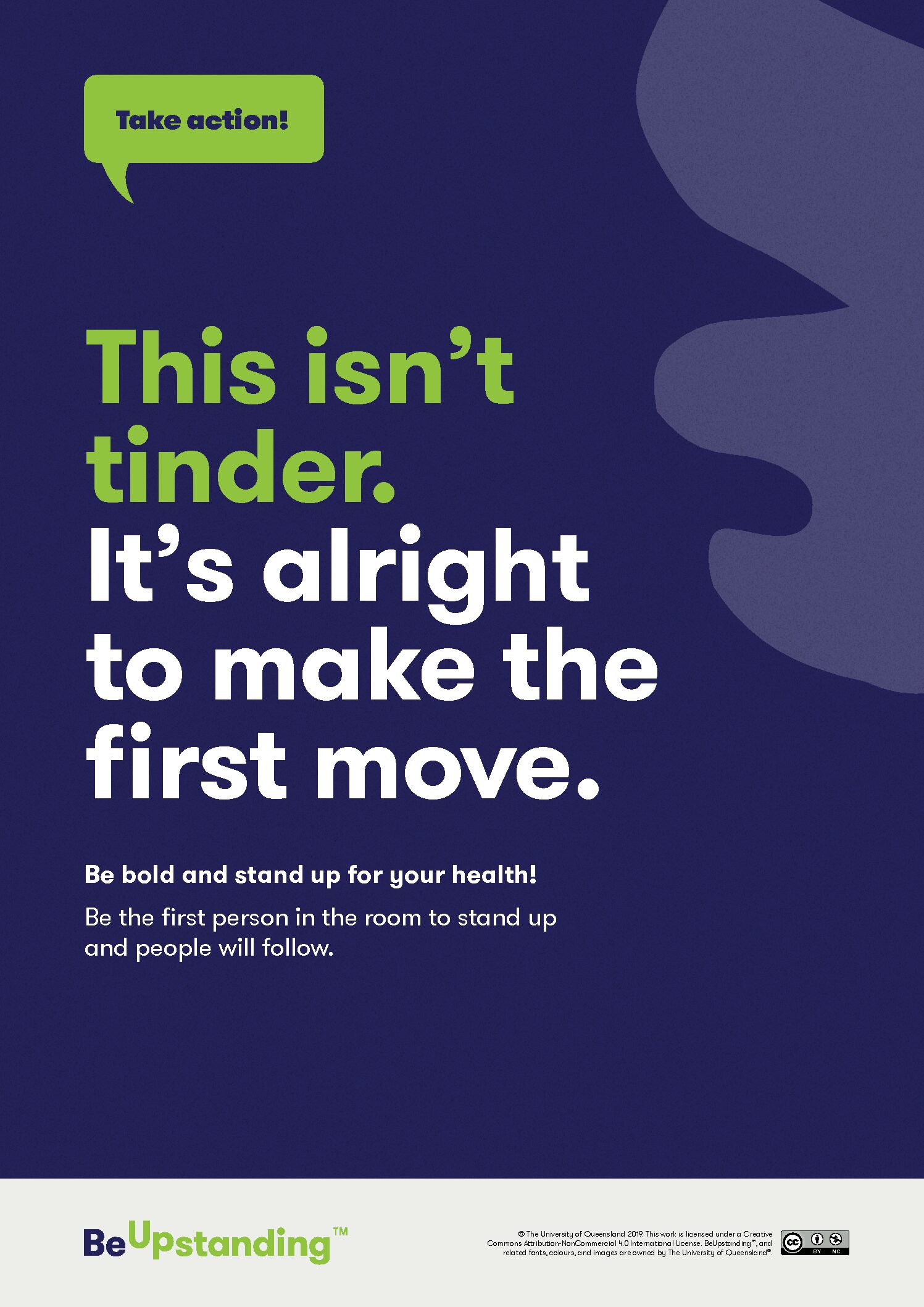BeUpstanding wants to help make workplaces everywhere more dynamic, active, and healthy. Built on a foundation of over ten years of research signalling the benefits of sitting less and moving more in the workplace, the BeUpstanding program was designed to change the way we work and think about our health for the better. But if we know that an “upstanding” workplace culture is a healthier workplace culture, how do we get the word out? And, maybe more importantly, how do we make it stick? Large scale behaviour change, like behavioural public health interventions, are understandably very difficult to implement—but here’s the gist.
Firstly, we need to consider who we can help the most. Even though it would be great to help everyone affected, finding target populations of those particularly “at-risk” helps interventions target resources where there can be maximum benefit. Target populations are found during the research stage of program development, long before the implementation of an intervention. Our VicHealth review in 2012 helped to identify desk workers as a key target population. Obviously, the dangers of spending most of your day sitting affect everyone, but the BeUpstanding champion toolkit particularly targets workplaces and organisations. This is where sedentary behaviour was most common across everyday Australians, especially those who work in office spaces.
Now that we have our target population, we need to consider how we can make social change. Creating social change is an important part of behaviour change at a larger scale, because it is no longer viable to analyse and change each individuals’ motivations and barriers to, in our case, being more active in the workplace.
Social change is described by the theory of planned behaviour as following the ABC model: attitudes (A) drive the type of behaviour (B) that people choose (C) to adopt and maintain. The ABC model therefore suggests that the key to social change is shifting attitudes. But how do we change public attitude for the better? A great way to get a target population to adopt new attitudes is to market them accordingly. This is called social marketing, and it’s similar to traditional marketing, except that it advertises non-tangible “products” like ideas, attitudes and lifestyles to the consumer. There are a few key tenets of effective social marketing:
- Consumer orientation—why should you care?
- Consumer orientation is when programs showcase their evidence base and objective to make their issue salient to the audience. For example, the team at BeUpstanding not only believe in the benefits their program can provide—they want you to know that their champion toolkit has been built by experts on a strong foundation of research. They achieve this through tools like the BeUpstanding blog (hello!), which aims to keep you up-to-date and showcase this evidence.
- Analysing and segmenting population—knowing your audience
- By analysing the population, programs can gain a clear idea of their target group. Like finding the target group to begin with, this is achieved through prior research or analysis of the target groups’ existing habits and attitudes.
- Segmenting refers to the targeting of a particular audience based on specific groupings. An important note is that the grouping of the target audience is more effective when grouping by attitudes, beliefs and health status, as opposed to demographic details like age and gender.
- Collectively, these strategies make it easier for programs to tailor their content to suit their audience. For example, decreasing sedentary behaviour benefits everyone, but the BeUpstanding champion toolkit targets organisations and workplaces, and especially those with an established office, desk-based work culture.
- Insight—does the program work?
- Insight refers to constantly keeping tabs on the progress and results of the program’s content and delivery. This is achieved with continuous research during the program, as well as user feedback. Insight is important so that program developers know where they can adjust and improve their program.
- The BeUpstanding team, particularly now in the early exciting stages of dissemination, is constantly gaining insight into the efficacy of their program and value user feedback immensely.

Although social change through marketing seems simple enough, there are barriers that prevent effective large-scale campaigns:
- Competing environmental factors: for example, the effectiveness of healthy eating campaigns might be hindered by easy access to cheap calorie-dense foods.
- Confusing messages or recommendations: program information that is inconsistent with the evidence or too difficult to implement may stifle effectiveness of behaviour change programs.
- Insufficient exposure to intervention channels and resources: behaviour change might not be achievable if the target population cannot access intervention resources, or are unaware of the risks of their behaviour.
Hopefully, by grasping the theory behind large-scale behaviour change through social change and marketing, you have gained some insight into how public health intervention programs like the BeUpstanding champion toolkit aim to make a difference in the lives of everyday Australians.
This blog post was written by Millicent Seeto while she was on placement with the BeUpstanding team at the University of Queensland.










Comments are closed.